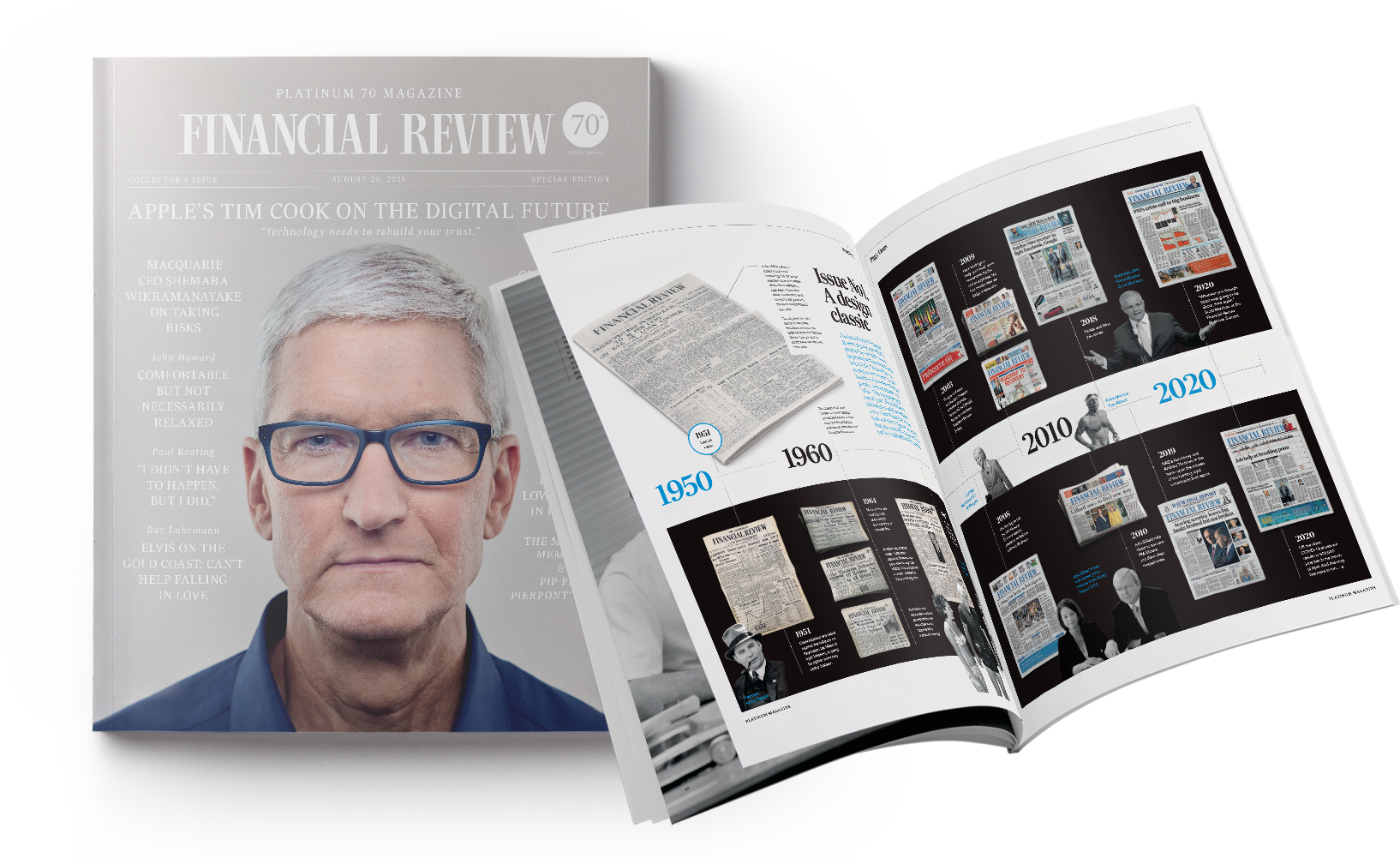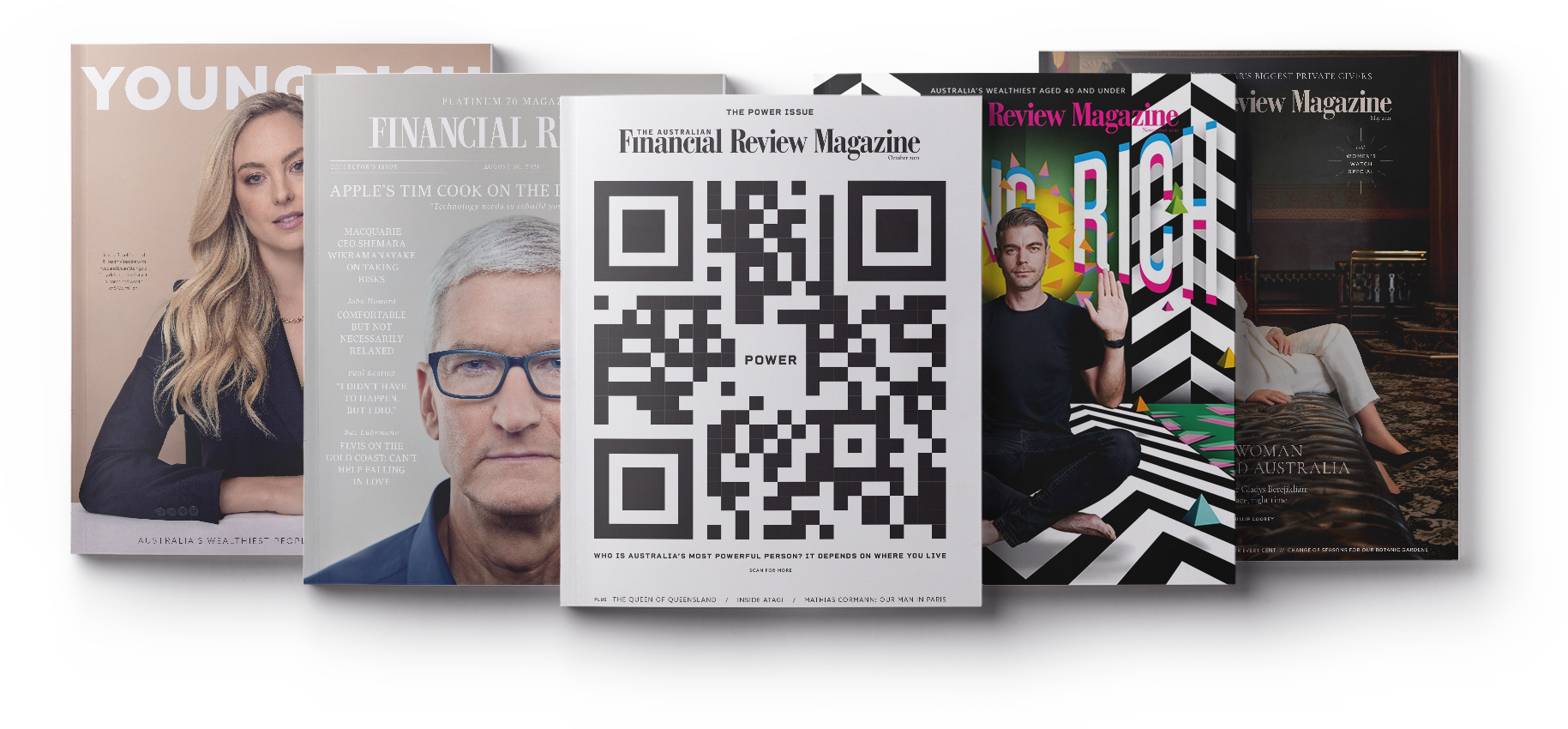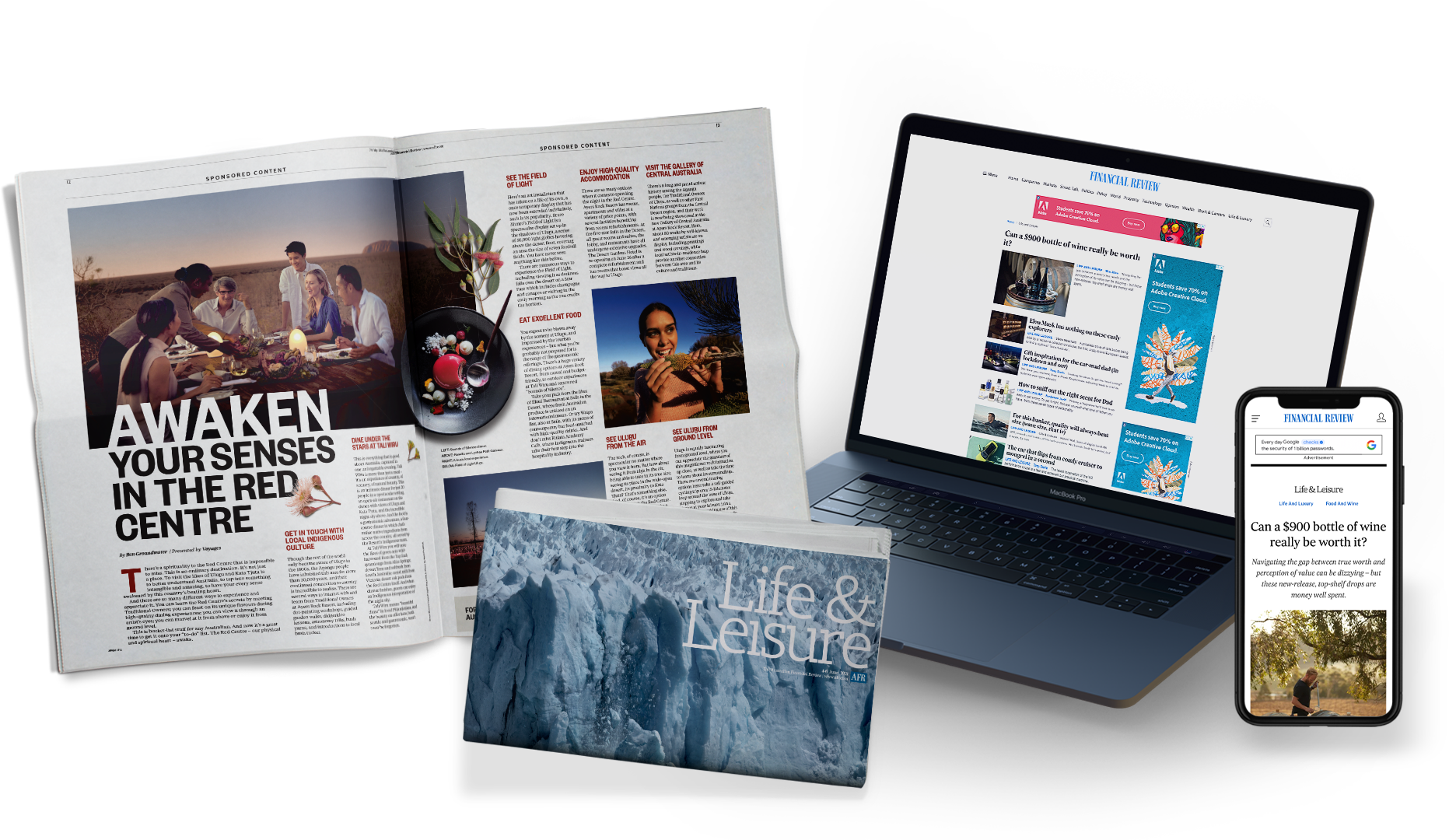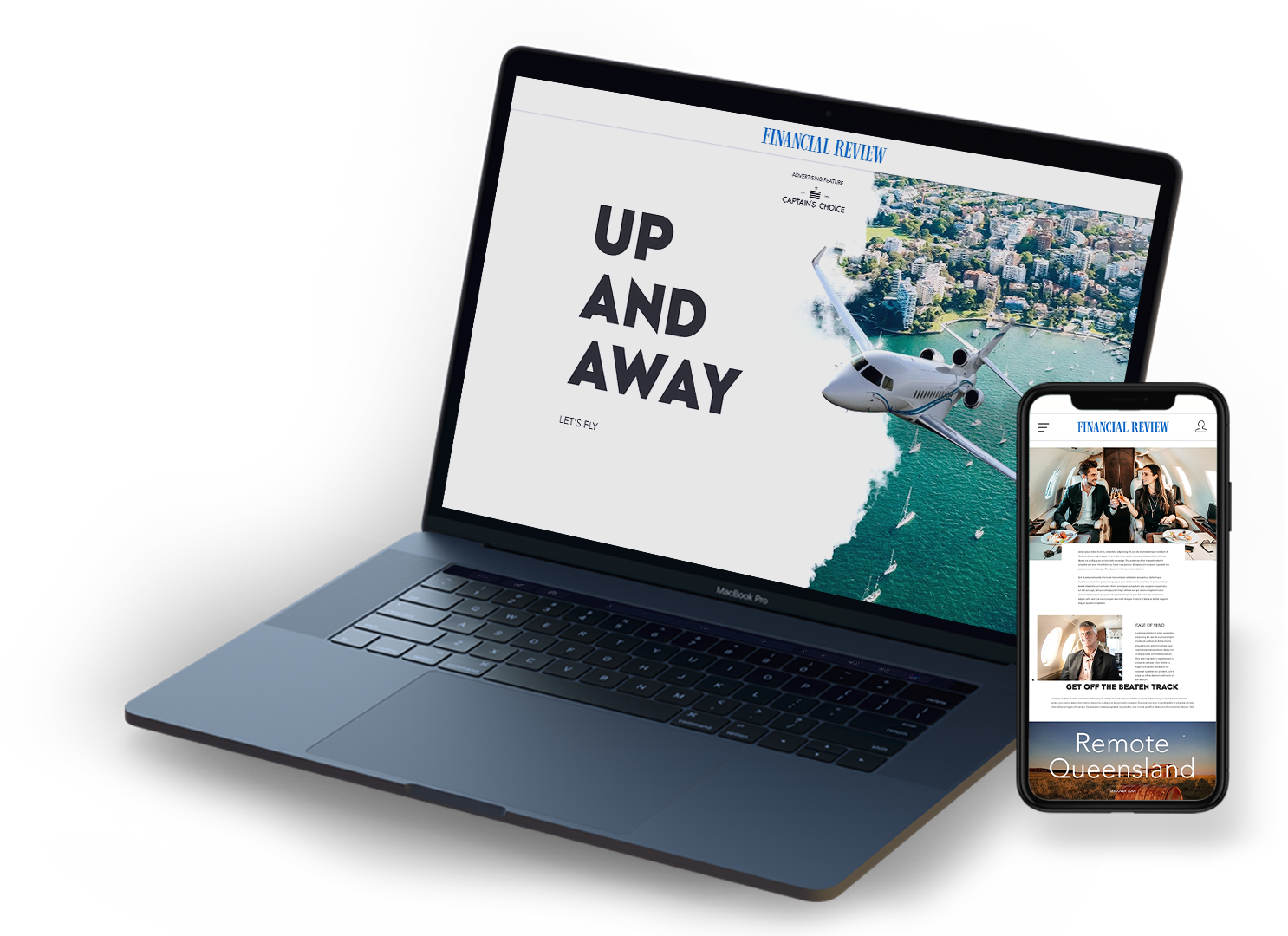
The Australian Financial Review is the country’s most read premium business masthead, growing its readership to 3.5 million across print and digital, according to Total News readership figures released by Roy Morgan this week. The AFR Magazine’s editor, Matthew Drummond talks about the power of print and how the AFR is providing brands with a powerful proposition to reach the new generation of high net worth and influential readers.

When The Australian Financial Review celebrated its 70th anniversary, it called on the AFR Magazine crew to produce a special magazine called “The Platinum 70th”. Adorning the cover for the magazine was one of the biggest scalps editor Matthew Drummond has so far collected: Apple CEO Tim Cook. Apple is at regular intervals the single most valuable company in the world. It’s also very much a tech company. What fascinated Drummond was how invested Cook became with being on the cover of the print product.
“People want to be on the cover of a magazine. The access to people you get, if you can say they’re going to be on a magazine cover, is really hard to beat,” Drummond said. “Even though they’re a tech company, they know that print means quality. Print has impact. It was a reminder of the power of print magazines to create cultural moments that people pay attention to.”
With arguably one the of the most envious gigs in journalism, Drummond came to the role of editor of AFR Magazine, like so many before him, via an unusual route. Originally a lawyer, Drummond started off logically enough as a court reporter at a time when Richard Pratt was being tried for anti-competitive behaviour. Then came a stint in banking and finance before taking on the prize role of European correspondent for the Fin based in Paris. Upon his return he took up the reins of the AFR Weekend before settling into his current role as editor of AFR Magazine.

All Killer, No Filler
Moving from a daily newsroom through a weekly newspaper to a monthly magazine represented not only a change of pace for Drummond, but an entirely different approach to his work.
“Because you’re working on a magazine that’s got very limited space, the strategy is always ‘all killer, no filler’. You have to say no to a lot of ideas before you hit a yes. Consequently, you’re not working towards a monthly deadline, you’re working three or four months out."
“You’re trying to think of what’s going to be the cover story in three months’ time. A newspaper reflects what’s going on that day, whereas a magazine must reflect a curated vision of the world and things that we've decided to put together for readers,” he says.
Rapturously Wrapped In Luxury
You need only take a walk down any high street in Australia’s CBDs and well-heeled suburbs to know the luxury sector is booming. Sydney’s Castlereagh Street, for instance, has queues snaking around corners outside of Hermes, Cartier, Tiffany’s and more as people patiently wait for their turn to be taken inside and parted from their hard-earned cash in exchange for the latest spectacular offerings. Matched only in their refinement by the eye-watering retail prices.
The lack of overseas travel has also been luxury’s gain, as a more generally positive outlook has loosened wallets, purses and pay pass codes as we emerge from two years of fear and uncertainty.
Drummond says AFR Magazine pioneered coverage of the luxury industry as a business in the same way any other business sector is covered. “It’s key to how the AFR Magazine works. We use the smarts inside the AFR newsroom to look at the business angles inside sectors that are more commonly seen from a lifestyle, arts or cultural perspective.”
In part, this approach grew out of the treatment of the restaurant industry as a business. An understanding of what’s going on in restaurants is similar to looking at art galleries and how their business model is evolving.
“We started looking at the luxury sector as a business model that could be studied, and fashion as a business as well. And we’ve been doing that for decades,” Drummond said.
As luxury has experienced its own locked-down renaissance, there’s a newfound confidence and optimism in media around luxury as well. New titles are emerging, and on the back of luxury product advertising they are increasing the number of issues per year.
“It seems that the shakeout that happened in print advertising when COVID hit the brakes on a lot of CMOs’ spends is well and truly over. There’s a new landscape with new players coming into the luxury magazine sector,” says Drummond.
But of all the magazines that work with luxury advertisers, the AFR Magazine was one of very few that kept to its advertising and publishing schedule. “We did not skip a single issue, which speaks to the strength of AFR Magazine in terms of its advertising, and also the fact that we see it as being not just an advertising play. It is a core part of the reader experience of the Financial Review.”

Subscribers Are Drivers
The overarching mantra of the past few decades has been print’s decline at the hands of digital. Perversely, digital is now informing what’s printed and driving its growth. Harnessing a digital-first strategy, AFR Magazine now finesses its content in the magazine around trends deduced from digital readership.
For instance, the November issue of AFR Magazine is now purely themed around the Young Rich List following the success, both in terms of subscriber interest and advertising, of the Rich List issue published in June.
“Focusing on digital readership is helping us better understand the value of lifestyle content. We’ve found that the more likely a subscriber habitually reads lifestyle content on www.afr.com, the less likely they churn. That’s the reason we increasingly push lifestyle content to our readers, through newsletters and in key spots on the homepage,” Drummond explains.
There’s an enormous opportunity for brands to reach a growing audience via the AFR, in both print and digital. In Nine’s full-year results, digital subscription revenue was more than $100 million. This was up 20 per cent year-on-year. All three mastheads (The Sydney Morning Herald, The AFR and The Age) grew very strongly, but the AFR grew at the fastest rate.
“We’re hitting new heights in our subscription base. Subscriptions for the AFR are consistently selling at a rate that’s 50 per cent higher than pre-pandemic. And it hasn’t come at the expense of print. We know from readership data that the print audience has remained steady, and for our premium magazine and weekly insert it’s growing,” says Drummond.
“One of the very happy consequences of our increased digital audience is that it’s lifting print. AFR Magazine, in print, has a readership of 452,000.* That’s up a whopping 80 per cent year-on-year. Our audience is now over four times larger than our nearest competitor. Life & Leisure’s readership has grown by a similar amount to 460,000**.
“This reflects our digital-first strategy. Digital-first has a surprising benefit – it can increase print. Almost everything in AFR Magazine and Life & Leisure is published on afr.com before the print titles are published, and each article promotes the on-sale date of the magazine or supplement. We use digital content from the magazine to market the printed magazine, thereby connecting the larger and growing digital subscriber base with our print products. The more people who subscribe to us digitally, the more people who look out for us in print – provided we have compelling content.

Growth in print readership has brought investment in new titles, including a new travel supplement within AFR Magazine. Meanwhile Life & Leisure, the weekly lifestyle insert, is about to produce its fifth gloss edition.
A Match Made In Heaven For Brands
Within the luxury sector, now more than ever, there’s an emphasis on showing leadership through high-impact and innovative executions in print and digital.
“We see increased appetite in brands wanting media firsts that show new ways to advertise, via print. This might be using distinctive paper stock, it might be through special gloss executions of wrapping the paper. It’s getting a tangible experience of luxury, of something special, something unique, through print,” says Drummond.
“That led us to create the Luxury Collection Bespoke Suite that enables us to offer a wide range of innovative print executions. We’ve done die-cut belly bands on the newspaper, VR experiences, gatefolds that align with themed issues of AFR Magazine. Print is about as tactile as media comes and we’re in the business of working with brands to create innovative, sensory moments that make their brand aspirations tangible, something you can feel.”
Brands more than ever need to tell their story. Since people couldn’t go into stores through lockdowns, luxury houses needed to find new ways to immerse customers in their brand.
“We’re seeing heightened demand for immersive advertorials on afr.com. These ‘immersives’ have proven popular with brands who traditionally would rely on being mentioned in editorial, but they want to reaffirm those stories with advertorials that provide the space to properly cover their heritage, their values, their innovations.
“We also now offer a sponsored mono-brand photo-shoot in Life & Leisure. Because the AFR is such a premium platform, brands have more confidence that even a digital advertorial execution will suit their brand requirements around how they are positioned.

“AFR Magazine has also minted its first non-fungible token, the cover of the Young Rich issue. For this year’s Young Rich issue, our researchers have included wealth held in cryptocurrencies for the first time, and we have a cryptocurrency entrepreneur on our cover. To mark this occasion, we figured we should turn that cover into an NFT which we auctioned off to raise money for The Smith Family. It sold for $77,450. It’s another illustration of how print can be turned into very distinctive, eye-catching digital assets.
“We see a strong pipeline of interest in gatefold covers for AFR Magazine too. We’ve done our first sponsored fashion shoot, which is an invitation-only opportunity we offer to key partners.”
And so print’s future, when done right, is looking quite bright. To that point, AFR Magazine’s average subscribers are younger than the rest of Nine’s newspaper subscribers: late twenty-somethings working in banking and finance, professional services or some other business enterprise.
“They see people reading the Fin and they know that’s the daily habit of successful people, and they want to be successful too,” says Drummond.
Because of their aspiring outlook, aspirational content is what these younger readers most seek out online, which informs Drummond and his team to make an entirely customised print experience for their emerging audience. A virtuous circle indeed.



